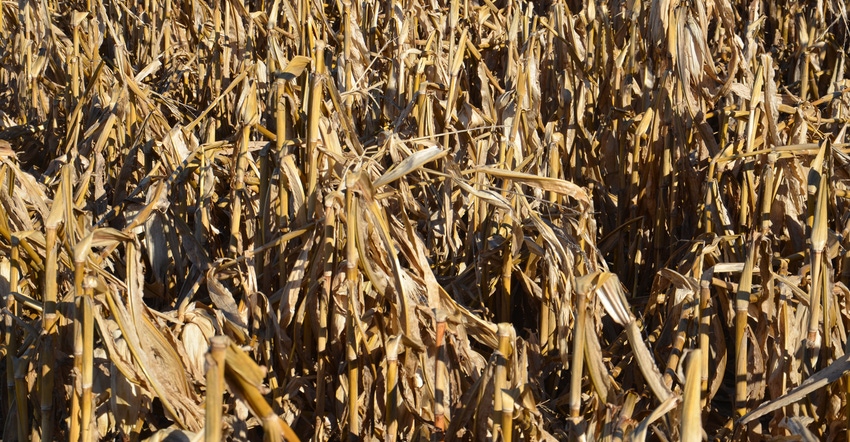
Pete Illingworth cautioned that the Indiana Prairie Farmer/Purdue University corn plot at the Throckmorton-Purdue Agricultural Center could be difficult to harvest this year. He noted there was lodging and wind damage across the plot, with the west side of the field, which received the most wind, being the worst.
Illingworth, who works at the research center near Romney, Ind., wasn’t wrong on his assessment of the condition of the field. In fact, the first six rows on the west side of the plot were 90% lodged. The reasons for the lodging were easy to understand.
“This field wasn’t planted until June 8 because of wet soils, so we knew it wouldn’t be one of the first we could harvest,” he says. As it turns out, it was one of the last plots to be harvested. Wet weather and lack of space for corn due to a big crop and limited storage at the farm delayed harvest until Dec. 1.
“We had several storms and some with high winds late in the fall,” Illingworth says. “We knew there would be lodging.”
A seed industry expert who helped take stand counts before harvest examined plants. He concluded that stalk rot wasn’t involved. The pith inside stalks was still healthy for that point in the season. Instead, high winds ravaging a crop ready for harvest were likely to blame.
Harvest success
Three decades ago, harvesting with old-style, metal corn heads with steep snouts running from the ground to the top of the head would have been a nightmare in this field. The corn head on the International combine used to harvest this plot is a modern, low-profile head, Illingworth notes. Snouts get under almost all stalks and pull in ears, even when stalks are broken over and down.
In harvesting the 8-acre trial, the combine operator only had to get out of the cab once to remove plugged stalks. He harvested the worst down corn pass without plugging once. It yielded 212 bushels per acre.
To be fair, checks weren’t made to see how much corn might have been left behind. The operator didn’t notice ears left on the ground, but harvest loss checks weren’t taken.
The trial consisted of three replications of five treatments. The goal was to determine which of five seeding rates produced the most economical result. Seeding rates were 26,000; 29,000; 32,000; 35,000 and 38,000 seeds per acre.
Two hybrids were included in the plot. There were differences in how each hybrid handled the wind and long wait for harvest, but both hybrids were relatively easy to harvest, according to the combine operator.
Data hasn’t been analyzed yet to determine if there were differences among seeding rates. In the same study in 2016 with similar genetics, the optimum seeding rate turned out to be around 32,000 seeds per acre.
Purdue University Extension corn specialist Bob Nielsen will analyze the data. Look for a follow-up report on the results.
About the Author(s)
You May Also Like




